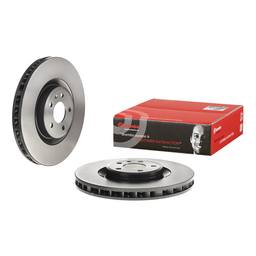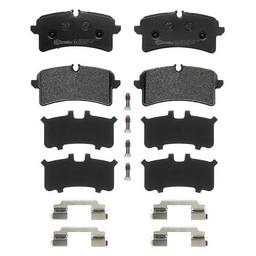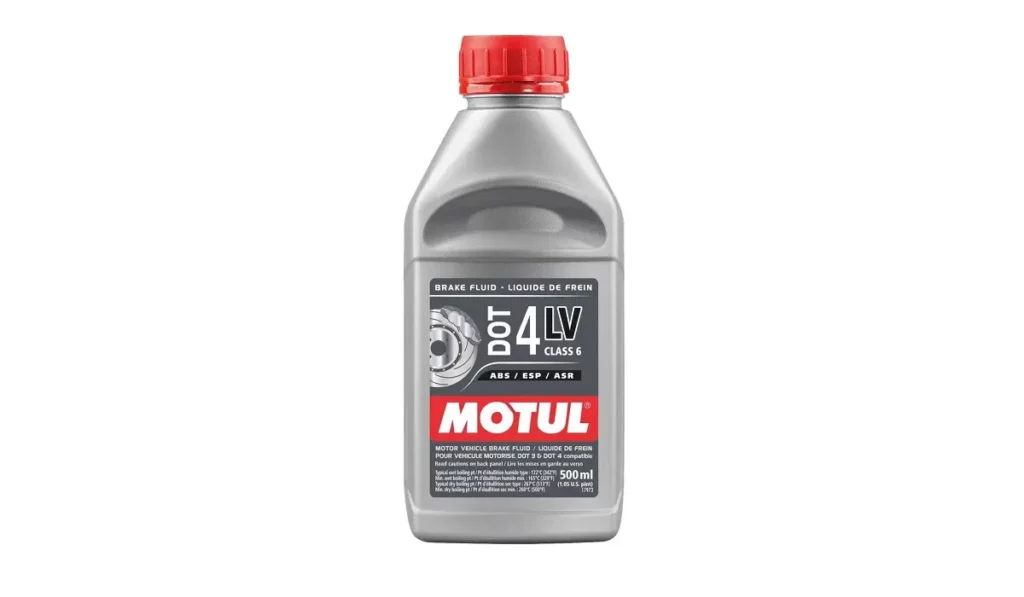When it comes to high-performance vehicles like the Porsche Macan, every component plays a crucial role in ensuring a superior driving experience. Among these, the braking system stands out as a critical feature, directly impacting both performance and safety. Regular Porsche Macan brake service is not just a maintenance routine; it’s a commitment to preserving the exceptional standards of your Porsche.
We understand the precision engineering that goes into every Porsche Macan and the importance of using the right parts for any service or repair. This comprehensive guide delves into the essentials of Porsche Macan brake service. From recognizing the tell-tale signs of wear and tear to choosing the right components for a brake repair, we cover everything you need to keep your Porsche Macan’s brakes in top condition. Whether you are a newbie or an expert in DIY, this post will provide you with valuable insights and tips.
Join us as we explore the ins and outs of maintaining the braking system of your Porsche Macan, ensuring that every journey remains as exhilarating and safe as intended. And remember, for the highest quality brake parts and expert DIY guide, eEuroparts.com is your go-to source.
Porsche Macan Brake System Explained
The development of the Porsche Macan’s brake system shares a connection with the Audi Q5 due to the shared platform in their early stages. Initially, the Porsche Macan was built on the same platform as the Audi Q5, a factor that influenced its design and engineering. However, Porsche significantly re-engineered this platform to align with their high-performance standards, including substantial modifications to the braking system.
This evolution focused on enhancing the braking performance to meet the demands of a sports vehicle, distinguishing the Porsche Macan from its Audi cousin. Porsche’s revisions included upgrading the brake components, tuning the suspension for a sportier ride, and recalibrating the electronic systems. The result is a braking system that supports the Porsche Macan’s dynamic driving experience, offering both reliability in daily use and exceptional performance under high stress — a true embodiment of Porsche’s racing heritage.
Front-Axle Brakes
The standard 4-cylinder Porsche Macan models are equipped with a black 4-piston fixed caliper from Brembo. The Porsche Macan brake rotor is a beefy one. You’re looking at a cast-iron brake disc measuring 345 mm in diameter. This setup is robust enough for the spirited performance expected from a Porsche. Stepping up to the more powerful 6-cylinder Porsche Macan S variant, Porsche draws from its Cayenne lineage, employing larger brake discs — 350 mm — with a silver 6-piston aluminum fixed caliper from Brembo to handle the additional power output. The Porsche Macan Turbo further distinguishes itself with even larger discs — 360 mm — and red calipers, indicative of its high-performance capabilities.
Rear-Axle Brakes
At the rear, the Porsche Macan introduces TRW floating-caliper brakes with integrated electric parking brake functionality — this setup is a first for the rear axle in the Porsche Macan lineup. Both the Porsche Macan and Porsche Macan S share this design, differing only in caliper color, while the Porsche Macan Turbo employs a larger 356 mm disc for increased stopping power. The rear brakes are carefully engineered to complement the front system, ensuring a balanced and responsive braking experience across all driving scenarios.
Porsche offers a Porsche Ceramic Composite Brake (PCCB) system for those seeking the ultimate in braking performance. This system features yellow 6-piston fixed calipers clamping down on massive 390 mm discs at the front axle and 360 mm at the rear axle. PCCB is renowned for its reduced weight, enhanced performance under stress, and superior fade resistance, making it a sought-after option for enthusiasts and track aficionados.
The Porsche Macan’s braking system represents a harmonious blend of technology derived from its shared platform with the Audi Q5 and Porsche’s own racing heritage. The result is a braking experience that is both reassuring in daily use and exhilarating when performance is demanded. Whether opting for the standard configuration or the advanced PCCB, owners can expect a level of braking performance that is distinctly Porsche — responsive, powerful, and enduring.
Signs of Worn Brakes on Your Porsche Macan
Maintaining your Porsche Macan’s brakes isn’t just a matter of performance; it’s crucial for your safety. Being aware of the signs of wear can help you anticipate when service is needed and prevent more serious issues. Here’s what to watch out for:
Brake Wear Warning Light
Your Porsche Macan has a sophisticated monitoring system with a brake wear indicator. When your Porsche Macan’s brake pads wear down to a thickness of about 3mm, the brake wear warning light on your dashboard will illuminate, accompanied by a warning message to inform you of the brake situation. This indicates that your Porsche Macan’s brake pads are reaching the end of their service life and need to be replaced to maintain the high performance and safety you expect from your Porsche.
Brake squeal
If you hear a high-pitched squeal when you apply the brakes, it’s time to pay attention. This sound is typically caused by wear on your Porsche Macan’s brake pads, signaling that the brake pad material is getting thin. While some noise can be normal under certain conditions, consistent squealing is a red flag that shouldn’t be ignored.
Other Brake Issues to Be Aware Of
Aside from the warning light and brake squeals, there are other symptoms to notice so you can take a good look at your brakes. Here are some of the symptoms to look out for:
Longer Stopping Distances — If it takes longer than usual to stop or the pedal sinks closer to the floor, this could point to a problem with your brake system that warrants immediate attention.
Unusual Noises — Grinding noises when braking are serious signs that your Porsche Macan’s brake pads may be completely worn, potentially damaging your rotors.
Pulling to One Side — If your Porsche Macan pulls to one side when braking, it could indicate uneven wear on your Porsche Macan’s brake pads, a stuck caliper, or a collapsed brake hose.
If you experience any of these symptoms, it’s advisable to have your brakes inspected as soon as possible. Regular checks and maintenance are the key to ensuring that your Porsche Macan continues to stop as well as it goes. And remember, for genuine Porsche brake components and expert advice, eEuroparts.com has you covered. Keep your journey safe by being proactive about brake care.
Replacing Brakes on Your Porsche Macan: How Often?
The Porsche Macan brake pads usually last from 30,000 to 40,000 miles or 3 to 4 years. Your driving habits and road conditions still influence this, so some of you might even go longer without needing a new set of brake pads.
As for the brake rotors, you would usually have to use up 2 sets of brake pads before replacement. Obviously, this also depends on the quality of the Porsche Macan brake pads you use, your driving habits, and road conditions. To be sure, the only way to know if your Porsche Macan’s brake rotors are worn down is by measuring them with a micrometer. Do this measurement annually during service to monitor the thickness of the Porsche Macan’s brake rotors and prepare if you need a replacement soon.
DIY Guide on Porsche Macan Brake System
Performing a DIY brake service on your Porsche Macan can be a rewarding experience, not to mention a great way to save on service costs. With the right tools and a bit of know-how, you can replace your Porsche Macan’s brake rotors, brake pads, and brake fluid yourself. Here is the list of tools you will need to kick off your DIY brake repair in your Porsche Macan.
- Working gloves
- Safety goggles
- Half face respirators
- OBD diagnostics tool
- Hydraulic jack rated at least 2 ton
- Jack stands rated at least 2 ton
- Wheel chock
- Inspection light
- Breaker bar
- Suction pump
- ½” torque wrench up to 200 ft./lb
- Triple square bit socket
- Caliper hangers (could be wire or strap)
- Dead blow hammer
- Brake caliper expander
- Brake fluid bleeder tool
- Flare nut spanner
- Soapy water spray bottle
- Anti-seize grease
- Brake grease
- Brake cleaner spray
- Sandpaper or wire brush
- 2” Paintbrush
- Disposable rags
Safety must be prioritized before diving into any DIY repair task, especially as critical as servicing your Porsche Macan’s brakes. Here are some essential safety measures to keep in mind:
Choose the Right Environment
Before embarking on your DIY brake service, setting the stage for a safe working environment is crucial. Start by choosing a workspace that’s on level ground; this stability is vital to prevent your vehicle from shifting or potentially rolling while you’re under the hood or chassis.
Equally important is the air quality of your workspace. Brake maintenance is known to produce harmful dust, so it’s essential to perform this work in a well-ventilated area. Proper airflow will disperse any toxic particles and help protect your respiratory health, ensuring a safer maintenance session as you service your Porsche Macan’s brakes.
Personal Protective Equipment (PPE)
Wearing appropriate personal protective equipment is imperative for your safety. Start with safety goggles to shield your eyes from brake dust and any debris that might fly up or the accidental brake fluid spray. Pair these with a sturdy set of working gloves that enhance your grip while safeguarding your hands against cuts, scrapes, and the corrosive nature of brake fluid.
Considering the fine particulates involved in brake servicing, a respirator mask is also essential to prevent inhaling brake dust, which can harm your respiratory health. Lastly, ensure you wear long sleeves and pants to protect your skin from any sharp components and hot surfaces you may encounter during the process. Taking these precautions helps ensure a safe and secure DIY brake service experience.
Stay Informed
Before commencing any brake servicing on your Porsche Macan, you must thoroughly familiarize yourself with the entire process. Take the time to meticulously review each step and gain a comprehensive understanding of the functions of each brake component you’ll be engaging with.
Alongside this preparation, it’s prudent to devise an emergency plan. Keep your phone accessible to call for assistance if an urgent situation arises swiftly. Additionally, it’s a good practice to inform someone that you will be working on your vehicle so they are aware and can check in if necessary, ensuring an extra layer of safety as you undertake the brake service.
Preliminary Work on Your Porsche Macan Brakes
Has the safety checklist been checked? Cool! We can start our DIY brake service on your Porsche Macan. Let’s start with lifting your car. Our article on the Porsche Macan upper control arm describes lifting the car’s front section in detail. To put the car’s rear section on a jack stand, locate the rear jacking point and unscrew the T25 of the panel cover next to it. Remove the panel cover and lift up the car on the jacking point using the hydraulic jack. Then, place the jack stand on the support point. Just remember to loosen the lug bolts before the wheels leave the ground if you don’t have an impact wrench. Once all four sides of the car are above ground, give it a nudge to ensure it is secured and won’t move while you are working.
You can now remove the wheels. Make sure to use the wheel guide and wheel lock key located on the trunk under the floor cover near the spare tires. Once all lug bolts are removed, the wheels can be seized into the wheel hubs. Hit the wheel assembly on the tires to loosen it, which should be removed easily.
Open the bonnet and locate the Porsche Macan’s brake fluid reservoir. Use a suction pump to remove some brake fluid on the reservoir to make room for the brake fluid once you reset the brake caliper piston.
Front Porsche Macan Brake Pads
To remove the front brake pads, loosen the caliper bolts using a breaker bar and M14 triple square socket bit. Locate the Porsche Macan’s brake pad sensor and disconnect it. Push the plastic pin and rotate the connector from the bracket 90° to remove it. Using a screwdriver, pry the brake pads to reset the brake caliper piston and to aid in the removal of the brake caliper.
You can now fully unscrew the caliper bolts, remove the caliper from the hub, and hang it on the upper arm using a strap or wire. Never let the caliper hang from the brake line! Afterward, using the brake caliper expander, fully reset the brake caliper piston to make room for the new brake pads. Once done, you can now remove the worn Porsche Macan brake pads from the caliper. Always replace the retaining springs to ensure noise-free brakes. Just push it into the caliper, and the new retaining spring just needs to be pushed back, and it will snap in place.
Clean the caliper using a paintbrush and brake cleaner, then apply a thin coat of brake grease on the mounting pins and the part of the new retaining springs that have contact with the brake pad’s plate. Do not over-apply the brake grease, and ensure that no brake grease will be in contact with the friction area of the brake pads. Once the brake caliper is cleaned and lubricated, install the new Porsche Macan brake pads on the caliper and install the brake pad wear sensor on the inner brake pad. The caliper can then be installed back into the wheel hub with a new screw.
Front Porsche Macan Brake Rotors
While the caliper is removed, remove the T30 screw holding your Porsche Macan’s brake rotors to the wheel hub flange. This is most likely seized; use a dead blow hammer to remove it from the hub flange. Once removed, clean the surface of the hub flange using sandpaper and a steel brush to ensure it is rust-free and the surface is leveled. Apply a thin coat of anti-seize grease on the flange, then install the new brake rotors. We recommend Porsche Macan brake rotors from Brembo if you want to save extra bucks.
Rear Porsche Macan Brake Pads
Before removing the rear brake pads, we must reset the brake caliper to the service position/installation position. To do this, use the OBD diagnostics tool and put the electronic parking brake in the service position. The procedure to do this depends on what OBD diagnostics tool you use. Once done, disconnect the brake pad wear sensor, push the plastic pin, and rotate the connector from the bracket 90° to remove it. Unclip the rubber cap of the bleeder valve to free the sensor wire.
Using a 13 mm socket, remove the upper and lower caliper bolts. You will need a thin-walled 15 mm spanner or grind down a cheap spanner to make it fit the slide bolts because it tends to rotate when you try to remove the 13 mm bolts. Once removed, pull the caliper out towards you to reset the piston, then pull it upward to remove it from its mount. Use a strap or wire to hang it, and never let it hang from its brake line. Use a brake pad expander to reset the brake caliper piston fully.
Remove the worn Porsche Macan brake pads from the bracket. Always replace the retaining springs to ensure noise-free braking. While you’re at it, clean the brake caliper with a paintbrush and brake cleaner and apply a thin coat of brake grease on the new retaining springs. Pull the sliding bolts out of the bracket and lubricate it as well with brake grease. Install the new brake pads into the bracket, and then you can install the floating caliper, too.
Rear Porsche Macan Brake Rotor
The brake pads must be removed first to remove the rear brake rotors — the brake pad bracket is not required to be removed. Then, remove the retaining springs and the T30 screw holding your Porsche Macan’s brake rotors to the hub flange. Give the worn brake rotors love taps to unseize them from the flange. Once it’s loose, guide them out of the brake pad bracket and clean the hub flange with sandpaper and steel brush to get rid of rust and ensure it is leveled. Apply a thin coat of anti-seize on the hub flange and install your new Porsche Macan brake rotors.
Renewing Porsche Macan Brake Fluid
Renewing your Porsche Macan’s brake fluid every two years is also part of your brake maintenance. Here’s how to do it. Remove the reservoir cap and use a suction pump to remove some brake fluid. Follow your brake fluid bleeder tool’s assembly and operating instructions, as every tool differs.
Once it is set, the first side to be bled is the farthest from the brake master cylinder; in this case, it is the rear right brake caliper. Connect the catch can’s hose to the bleeder nipple and loosen it using an 11 mm flare nut spanner until the old brake fluid escapes. Continue to let it bleed until you can see that it is clear and there are no bubbles, this usually happens after 300 or 400 ml of brake fluid has been collected. Remember that the bleeder tool should not be emptied during the procedure, or you will introduce air to the system. Once done, proceed to bleed the rear left brake caliper by following the same procedure
The front right brake caliper is next. It has two bleeder nipples, and as a general rule, you’ll have to bleed the inner side first, then the outer. Once both bleeder nipples are done, proceed with the front left brake caliper. Again, you’ll have to check if the bleeder tool has adequate and fresh Porsche Macan brake fluid. You do not want to introduce air into the system and repeat the bleeding process.
Now, because brake fluid is a natural enemy of paint, you’ll have to ensure that it is prevented from making contact with your car’s body exterior or any painted part. You don’t want to ruin your car’s best look, right? If it did, quickly spray it with soapy water and wipe it off right away to prevent it from activating and damaging your paint.
Post Repair Tips on Your Porsche Macan Brakes
You should press the brake pedal several times to ensure the Porsche Macan’s brake pads are positioned correctly. You’ll also have to end the service position/installation position function using the OBD diagnostics tool. Always tighten the bolts to torque specs. Below are the torque specs that need to be followed.
- Wheel lug bolts — 118 ft. lb (160 Nm)
- Rear brake caliper bolt — 26 ft. lb (35 Nm)
- Front brake caliper (Porsche Macan base model) — 145 ft. lb (196 Nm)
- Front Brake caliper (Porsche Macan S, GTS, Turbo, PCCB) — 22 ft. lb (30 Nm) + 90°
And lastly, new brakes need to be bedded in. Follow the manufacturer’s instructions on how to do so to ensure optimum braking efficiency. This can take up to 150 miles.
Get Porsche Macan Brake Parts From Experts
In servicing the Porsche Macan’s brakes, the precision of quality parts is paramount. eEuroparts.com is your expert source, ensuring each component—from brake pads to brake rotors—meets Porsche’s rigorous standards. We’ve journeyed from understanding wear indicators to meticulously selecting parts for DIY repairs. Highlighting the lineage from the Audi Q5 to the enhanced Porsche Macan brake system, we emphasize safety, from using the right tools to following a well-ventilated, step-by-step guide. For the enthusiasts rolling up their sleeves, our tips and insights aim to empower you with the confidence to maintain the exceptional performance of your Porsche Macan. Trust in eEuroparts.com for premium parts that uphold the Porsche legacy of excellence on every road and in every condition.














